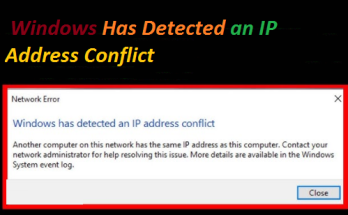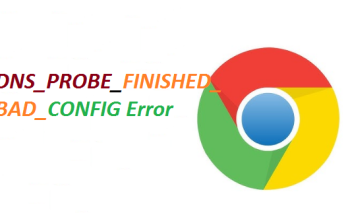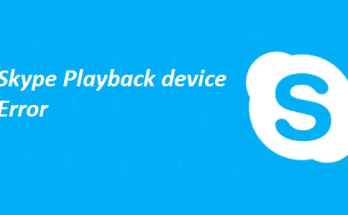Unfortunately, the first burst of speed you experience from your laptop is short-lived. You’ll notice a noticeable decrease in performance over time. This is primarily because of the accumulation of programs and data and the constant stream of software updates.
This steady decline toward obsolescence may be avoided if you don’t allow yourself to get complacent. Here are the best ways to get your laptop to feel like a younger version of itself again. You’ll nearly feel like you have a fresh new computer if you try any (or all) of them.
Get Rid of The Clutter
Is there a noticeable difference between your computer now and when you first purchased it? Hundreds of applications and apps, many of which you probably no longer require, may be slowing your machine. Getting rid of as many of them as possible can free up some space on your laptop.
Purge your computer of games or software you haven’t used in a while. If you ever need to reinstall this program, it’s a simple process.
Extensions and add-ons that are taking up space in your browser may be removed in the same way, and your online surfing should speed up. Fewer extensions mean fewer potential threats to your safety too. Both Apple and Microsoft give detailed instructions on removing undesirable programs from your computer. Also check for cookies and history. Every site tracks you nowadays be it Facebook, Amazon, OnlyFan or tiktok. So, make sure to delete your cookies every month.
Lighten The Start-Up Load
More and more programs you install on your laptop want to start-up simultaneously with the operating system. It might take a long time for your computer to start up if you have a long list of items that you don’t use.
The Apps and Start section of Settings provides a list of apps that are automatically launched when Windows is started. Alternatively, you may launch Task Manager (found on the taskbar). Then, choose the Start-up tab to deactivate other low-level programs. After logging onto your computer, select the Login Items option in the System Preferences section of the n macOS and disable then.
Note, don’t disable potentially critical items just because you can. It’s as simple as uninstalling the apps that don’t require starting with Windows or macOS.
Ensure Your Hard Drive Has Breathing Room
When your laptop’s hard disk is nearing capacity, you’ll notice decreased performance.
Having someplace to install programs and store data isn’t the only problem. Free disk space is often used as a substitute for system memory. Thus, when you open too many apps or files, Windows and macOS put some data on hold until it is required again.
A lack of overflow space might cause the system to become slow while you’re doing many things at once. It’s best if you have a lot of storage space. The Samsung 500GB T5 portable SSD is an excellent method to ensure that you never run out of space.
Use Your Operating System’s Built-In Capabilities to Get the Job Done
Some of the built-in programs in both Windows and macOS are able to provide a little more zip to your laptop. Defragmenting and optimizing your hard disk is as simple as running the Defragment and Optimize Drive program in Windows (located on the taskbar).
Disk Cleanup is another Windows software that you may use from the taskbar. Temporary files, obsolete system update files, Internet cached data, and so on may all be deleted using this particular program. By selecting several categories, you’ll be able to see how much space you can save up.
In the Apple menu, click About This Mac and click Storage. Then go to the Storage tab. There is a range of cleaning options for your Mac that you may choose from. For instance, clearing temporary files and downloaded movies that you haven’t yet seen. You can always download them again from Apple.
Install any available software updates on your computer, whether it’s running Mac or Windows. You can either Update & Security in Preferences in Windows or go to Software Update in the About This Mac dialog box. This ensures you are running on the newest operating system optimizations, fixing the bugs.
Upgrade Your Current Hard Drive to an SSD
If you’ve had your laptop for a time, you may not have access to an SSD. Look up your laptop’s specs online if you’re unclear whether it has an SSD. If your hard drive seems to be spinning, you may want to upgrade to a quicker, more efficient SSD.
Installing a solid-state drive (SSD) may improve laptop speed by up to 10 times. Depending on storage size, read speeds, and manufacturer, a solid-state drive (SSD) may cost as little as $70.
Seek Some Outside Help
To get rid of the jumbled mess on your laptop, there are a number of laptop cleaning apps available online. If you’re looking for software to help you find and remove duplicate files, Wise Duplicate Finder (Windows) and Duplicate File Finder Remover (macOS) are two examples.
IObit Advanced SystemCare is a good all-in-one system cleaner for Windows. It removes unnecessary temporary and trash files. Further, it cleans out the Windows registry settings file, which may become clogged up with unnecessary entries. There is a free version of the program, but you may purchase the Pro version if you want additional features.
To improve the speed of your MacBook, CleanMyMac is a good app to use on macOS. It frees up space on your hard disk, improves the speed of your applications, and eliminates programs that you no longer need. There is a free trial, and the program costs $35, but it has a lot of features.
It’s easy to put your laptop on recovery mode using RecBoot, a free program that works on both Mac and Windows computers.
Although this isn’t an all-inclusive list, it’s an excellent place to start. If the developer isn’t well-known or lacks a substantial number of user evaluations, be skeptical about downloading their software.
Consider The Nuclear Option as A Last Resort
Although it’s a little more difficult than the other options, this one is most effective. Reinstall Windows or macOS from scratch. Ensure that all of your data has been backed up to another place. You can then simply reinstall all of your software and games since everything will be deleted.
On Windows, it’s a breeze to get started. Resetting your computer is as simple as going to Settings, clicking Update & Security, and then clicking Recovery. Your laptop should operate just as well as it did when it was new once you install the updated version of Windows.
For those using macOS, the procedure is a little more involved. Holding down Command + R while your Mac restarts is required. You may reinstall macOS by clicking on the Reinstall macOS option in the macOS Utilities box. You’ll need to restart your laptop when the process is complete.
If you want to maintain your laptop running like new, you should consider reinstalling Windows or macOS regularly. Just be sure you have a fast way to retrieve any crucial data you may have lost. Tools like OneDrive for Windows and iCloud for Mac make this simpler than ever.
Check Out These Tips Before You Shell Out for A New Laptop
Instead of spending hundreds of dollars on a new laptop to remedy problems with performance and Storage, try using the suggestions listed above to make your current laptop appear new. With these easy fixes, you may be able to prolong your laptop’s life.


